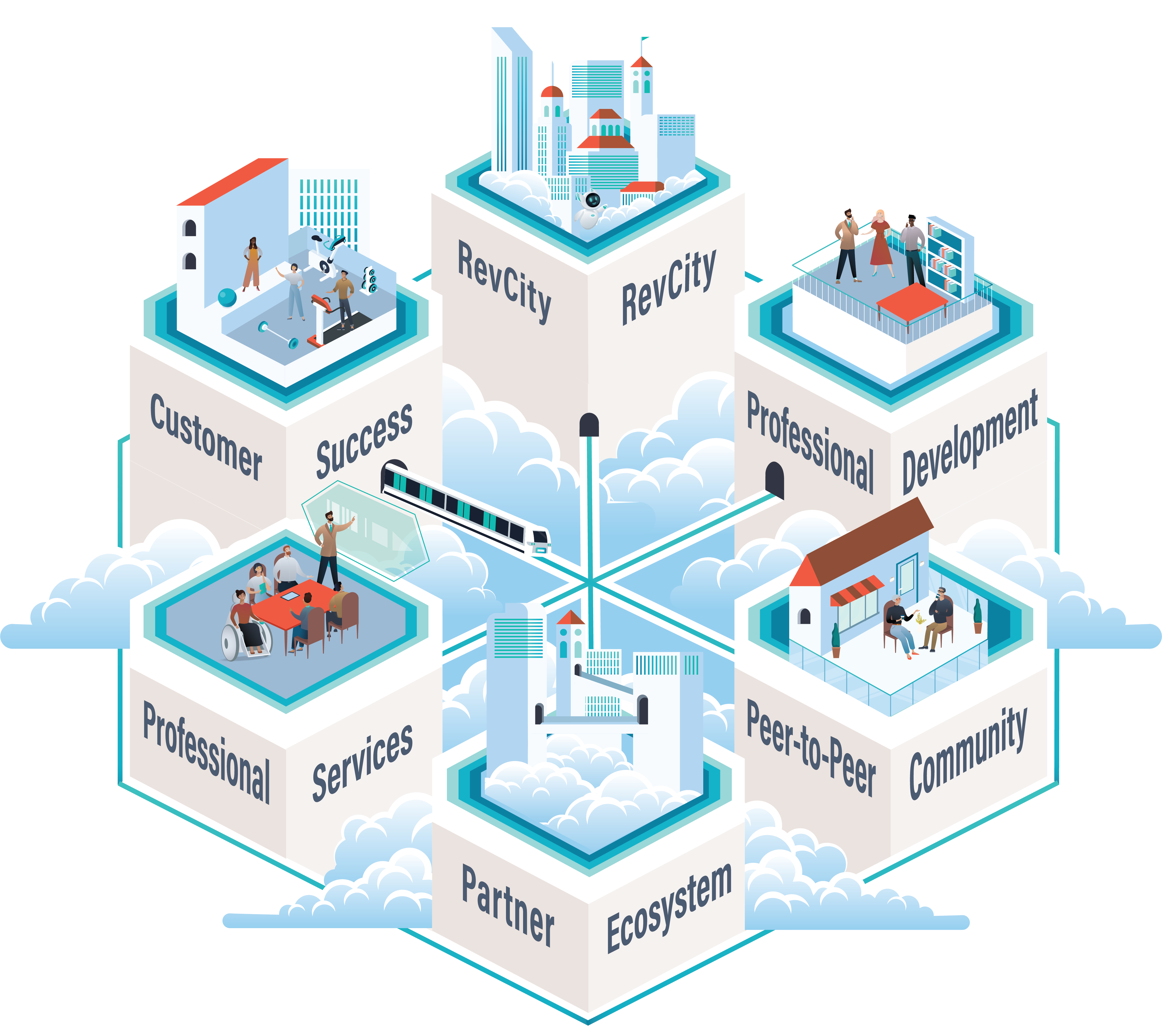Imagine knowing exactly which companies are ready to buy your products — at this very moment. And not just companies that match your ideal customer profile, but organizations that are:
- Actively researching solutions like yours
- Comparing your offerings to competitors
- Preparing to make purchase decisions
This is the reality that predictive analytics delivers to manufacturers today. Traditional sales approaches leave teams struggling to identify the right accounts and timing for outreach, predictive analytics turns this guesswork into precision targeting.
Instead of reactively responding to leads, manufacturers can now proactively identify and engage potential buyers during their research phase — often before they’ve even visited your website. By using AI and big data, sales teams can target accounts that are most likely to convert, dramatically improving win rates and accelerating sales cycles.
For manufacturers competing in today’s marketplace, this capability is more than an advantage. It’s becoming a necessity for survival.
Why Traditional Sales Outreach is Limiting Your Results
Traditional sales outreach relies on cold calling and lead lists that quickly become outdated — leaving reps essentially operating in the dark, missing crucial signals that could indicate which accounts are ready to buy.
According to 6sense Research, buyers conduct 70% of their research online before they ever engage with a company, making traditional outreach even less effective.
Think about your current sales process. Some consultants recommend devoting between 30% and 40% of your week just to prospecting — that’s three hours every day your team spends sifting through outdated contact lists, reaching out to prospects who may have already chosen a competitor or aren’t even in the market for your products. This reactive approach means you’re often entering conversations too late, after potential customers have already formed strong opinions about what they need and who they want to work with.
The cost of this inefficiency is staggering. Forty percent of sellers say prospecting is the most difficult part of their job, and half of all prospects aren’t even a good fit for what you sell. Your sellers waste valuable time pursuing unqualified leads while genuine opportunities — companies actively researching solutions like yours — slip through the cracks.
You can’t afford to have your team making educated guesses about which accounts to prioritize. Plus, without the right insights, your team lacks visibility into which buying team members within that account are engaged, and which ones you need to target to expand your influence.
Let’s be clear: B2B buying processes are becoming increasingly digital and sophisticated. If your sales strategy hasn’t evolved to match this transformation, you’re not just falling behind — you’re actively handicapping your team’s ability to meet their quotas and grow your market share. Not everyone in your Total Addressable Market (TAM) is a buyer, at least not at this moment. The key is focusing on the ones who are ready to buy.
What is Predictive Analytics?
Predictive analytics combines your historical sales data with real-time buying signals to identify potential buyers. This technology goes beyond basic lead scoring by using artificial intelligence to analyze thousands of data points, helping you understand not just which companies might need your products, but which ones are actively in-market right now.
Think of it as an early warning system for your sales team. By analyzing a complex combination of data-modeling, machine learning, data-mining, and AI, predictive analytics monitors digital behavior across your market to spot companies showing buying signals. These might include:
- Technographic data about their current technology stack and contract timing
- Organizational performance indicators like profitability and new funding
- Market forces such as new regulations or compliance requirements
- Active research around specific product categories or competitor websites
For manufacturers, this intelligence helps you:
- Identify which accounts are actively researching products like yours, even before they visit your website
- Understand where buyers are in their purchase journey, from early research to final vendor selection
- Determine the best time to reach out based on real buying signals rather than guesswork
- Recognize when existing customers show signs they might be ready for additional products or upgrades
This technology continuously learns and improves its predictions by analyzing patterns in your successful deals. Predictive analytics captures hidden buyer intent signals, assigns them to specific accounts, and helps your team uncover potential opportunities before buying decisions are made.
What makes this especially valuable is the ability to detect subtle changes in buyer behavior across your entire market. When integrated with your CRM system, it automatically prioritizes accounts based on their likelihood to convert, helping your sales team focus on the opportunities most likely to close.
For example, when a company starts intensifying their research into specific product categories or manufacturing capabilities, or when multiple decision makers in a strong-ICP fit account are conducting research, predictive analytics can alert your team to engage before the competition even knows there’s an opportunity.
As a result, your sales team can stop gambling on cold outreach and start having informed conversations with the right decision makers at the right time.
Predictive Sales Analytics for High-Achieving Internal Sales
When your internal sales team has access to predictive analytics, they transform from reactive responders into strategic sellers. Instead of casting a wide net and hoping for the best, your team can focus their energy on accounts that match the profile of your most successful customers: companies that are not only a good fit for your products but are actively showing buying signals.
Consider how Van Miner, Director of Sales Development at 6sense, maximizes his team’s effectiveness. Using multiple prioritization dashboards and predictive insights, Van’s team can instantly identify which accounts to prioritize. Sales managers can track activities, monitor engagement levels, and spot whitespace opportunities, ensuring their teams engage with truly in-market accounts rather than pursuing cold leads.
By adopting this targeted approach:
- Priority accounts rise to the top automatically. Your sales team can quickly identify which accounts deserve immediate attention based on both fit and intent. According to research, sellers typically spend only 30% of their time on actual selling activities — the rest is consumed by prospecting, cold calling, and administrative tasks. By using predictive analytics, your team can concentrate on companies that closely resemble your best customers, resulting in higher conversion rates and more efficient use of resources.
- Sales cycles compress significantly when your team can engage buyers at the right moment. Studies show that 60% of buyers want to connect with sales during the consideration stage, after they’ve researched the options and come up with a short list of potential partners. Predictive analytics enables your reps to spot potential customers early in their buying journey and reach out with relevant, timely information. This precision can reduce average deal closure times by up to 25%.
- The impact on stakeholder engagement is particularly powerful. In complex B2B sales, your initial conversation might start with an engineer at your customer’s site, but the decision-making group often includes directors, plant managers, and procurement specialists. With research showing buying teams can include 14 to 23 members, predictive analytics helps you identify all these key players early, allowing your team to develop targeted outreach strategies for each stakeholder. This comprehensive approach accelerates the decision-making process and increases your chances of winning the deal.
Companies using predictive analytics have seen their revenue generation effectiveness increase by up to 120% when they can identify and pursue accounts that are truly in-market and ready to buy.
Predictive Sales Analytics to Spur Distributors
Your distributors are crucial partners in reaching your market, but they’re juggling multiple product lines and countless accounts. By equipping them with predictive analytics, you transform their approach from reactive order-taking to proactive opportunity hunting. Instead of spreading their attention thin across all accounts, they can focus on the ones most likely to buy — right now.
As Dustin Deno, CRO of Amper Technologies and a former SVP of Showpad, says, “The beauty of 6sense is that it looks back at where you perform well and then surfaces other accounts that are doing the same behaviors those other accounts were doing when they bought.” This insight can guide your distributors to accounts showing real buying intent for your products.
This changes the game for your distribution network in three ways:
- Distributors receive prioritized lists of accounts needing immediate attention, based on real buying signals. Instead of relying on gut feelings or waiting for orders to come in, they can proactively reach out to accounts that are researching solutions. Account insights such as technographics, organizational performance, market forces, and active research patterns also help your distributors have the right conversations with the right customers.
- Precision targeting creates a ripple effect. When distributors know which accounts to focus on, they spend less time on unqualified leads and more time building relationships with customers who are ready to buy. This leads to higher conversion rates, faster sales cycles, and increased revenue for both you and your distribution partners.
- Distributors are aligned with your overall sales strategy. By sharing the same data, both your internal team and your distributors can work in harmony, reducing channel conflict and improving market coverage. The predictive platform continuously learns and adapts as more data is collected, helping your entire channel become more precise in their targeting. No opportunity falls through the cracks and each account receives the appropriate level of attention.
Empowering distributors with powerful analytics and insights, you become more than just another manufacturer — you become a strategic partner in their success.
Conclusion
Embracing predictive analytics is more than modernizing your sales approach. It’s about securing your competitive position in an increasingly data-driven market. When your internal teams and distributors can identify and act on real buying signals, you create a synchronized sales engine that captures more opportunities and closes deals faster.
The evidence is clear: Manufacturers who use predictive analytics are pulling ahead of their competition. They’re engaging potential buyers earlier in the purchase journey, having more relevant conversations, and winning deals that traditionally might have gone unnoticed until it was too late.
Consider what this means for your business:
- Your sales team focuses their energy on accounts that are actually ready to buy
- Your distributors become more strategic partners, armed with insights that help them sell more effectively
- Your entire sales organization operates with greater precision and confidence
- Your market share grows as you capture opportunities before your competitors even know they exist
The future of manufacturing sales is already here. Those who embrace predictive analytics now are positioning themselves to lead their markets. The technology exists, the competitive advantage is real, and the time to act is now.
 Skip to content
Skip to content



